S.A.V.A.
 Armored car (1914) - Kingdom of Belgium - 3 built
Armored car (1914) - Kingdom of Belgium - 3 built
The Belgian Army's Improved Armoured Car

About S.A.V.A
The Societe Anversoise pour Fabrication de Voitures Automobiles (S.A.V.A.) of Antwerp was born in 1910 as the Société Anonyme Royal Star, producing cars and motorcycle and headed at first by L. Van Cauwenbergh. Royal Star's previous models were still at first produced, with four-cylinder models 11/12 CV (1693 cc displacement) or a 17 CV (3308 cc displacement) as well as a 20/22 CV (3770 cc displacement) and a 23 CV (4084 cc displacement), a 25/35 CV (4942 cc) and six-cylinder models such as the 29 CV (6126 cm³) and a 37 CV (7412 cm³), down to the small single-cylinder 7 HP (681 cm³) partly made with De Dion-Bouton parts.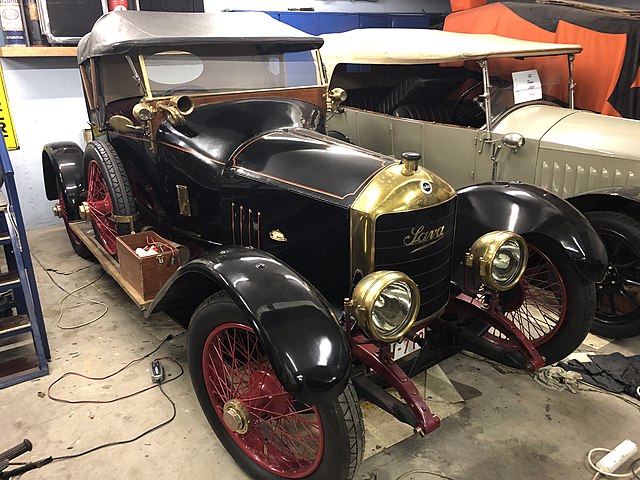
In 1911 the 10/12 HP, with a Fondu Co. 4-cylinder (1693 cm³) wa sintroduced and from 1912 the range was limited to the 10/12 HP an,d the new 4-cyl. 14/16 HP (2474 cm³) and 18/24 HP (2957 cm³). By 1914 only a few SAVA armored cars were made, and they were armored by Cockerill plates, proposed to the Belgian Army as a private venture, with a shape reminiscent of the Austro-Daimler armored car. In 1918 the new 20 CV appeared, produced until 1922, followed by a 15 HP 4-cylinder (2001 cc) from 1922 to 1923. During the First World War SAVA was managed by Raoul Lahy but in 1923, Minerva Motors took it over.
Development
Immediately after the hostilities commenced in August 1914, Belgium began looking after armored cars and by September, the Minerva armored car entered service with a few dozen manufactured. But on the initial mobile part of the war, flaws soon appeared. It was proposed to get rid of identified framework issues, and that's when SAVA name entered the frame. The Minerva were built, based on the passenger car chassis Minerva 16CV but the protection was inspired bu contemporary French Armoured Cars designs and lacked a roof. Although it reduced overall weight and chassis load to keep mobility, but losses amounted, notably due to shrapnel, amon which the design initiator, Charles Ankar. The Belgian command recoignised a urgent solution was needed.In 1916 year, all Minerva armored cars were upgraded, both with a roof and a new turret, but back to early autumn 1914, a different project was started, and the capacity of Minerva to deliver more vehicle from its factory in Antwerp was failing just as German troops were approaching the city. According to reports of the time, S.A.V.A. was approach to submit its own design, and upon completion and approval, new armored vehicles were ordered. The resulting model was called the "Auto Blindée SAVA". Later it will be delined into the SAVA Type 1 as first production version (retroactively).
The original chassis was taken from a projected race car, with a powerful engine, reinforced chassis and great performances. The available stock of engines for it also enabled an increase in armour protection, leading also to increase the combat weight compared to the Minerva. Sources conflicts about the time the first vehicle were assembled, some estimates being as soon as October 1914 as German troops besieged Antwerp. All available automobile chassis from SAVA could not be converted and at the start only three were found suitable for conversion, with the assembly of the hulls by Cockerill. Other sources states production started in September, before the occupation of Antwerp, with three armored vehicles transferred to the army and further production cancelled.
Design of the SAVA

The three SAVA were thus among the first Belgian armoured cars built, turreted after Belgium public opinion was shoick by the loss of the vehocle commanded by Prince Baudouin de Ligne, killed in a daring raid to destroy a bridge behind German lines. The fully enclosed hull and addition of a turret were both logical improvements, and soon the British and French armoured cars of the same period followed up.
General Layout
The S.A.V.A. chassis of Antwerp, three made, went to Cockerill at Seraing, near Liege. Engine and the crew compartment were fully enclosed with a nice curved front plate to enclise the driver, sloping up from the bonnet and merge with the roofline. The turret ring behind followed the curve of the hull rear, while the turret itself was dome-shaped, opened to the rear, so closer to Navy gun shields (a powerful influence of early armoured fighting vehicles). For access and exit, two hatch doors on both sides, "suicide type" (rear opening) beneath the turret were installed.The base chassis had a classic ladder frame construction. The crew of three comprised the drive, and the MG-gunner plus his assistant loader. The driver sat forward and was the closest to the side hatch, behind him were the located machine gunner and assistant. There was a step inherited from the base car. Machine gunners used a simple bracket attached to the hull to access from above.
The driver could see forward via a rectangular flap in front, that could be maintained on struts or closed shut; leaving a slight slit. The turret was not fully enclosed, both the gunner and loader can stand in it and see around, or stay hidden with the shield pointed forward in combat. They could see through the narrow gun slit. Additional inspection hatches were located on the side hatch and curved back plate. The vehicle left no recorded data to go with and is estimated circa 4,5 to 5 m in lenght, les than two meters wiede for at best 2,50 meters tall. Combat weight was around 3 tons to 3,5 tons and still could manage high speeds.
Protection
The armored car was protected by an armoured hull which thickness was no more than 4-5 mm, bolted or riveted onto the frame in the desired configuration. The body had noticeable differences woth the Minerva. The forward compartment had a layed "S" shape from the bonnet to the roof line, a curved sheet not easy to manufacture. It was a single plate, and so constituted both the frontal part and roof whereas vertical sides had a rounded upper edge when connecting to the main forward plate. The walls lower elements covered the chassis frame.The main fighting compartment was shaped as a metal box, with an addon section ending as a half-cylinder on top of which was located the turret ring and domed turret shield, on a rollbearing mount. Rear wheels were covered with inclined guards. The engine and gearbox under the armoured hinged hood of simplified shape was ended by a vertical armor sheet plus large window and louvres to supply the front radiator.
Engine and Performances
The SAVA gasoline engine was rated for 40 hp and coupled with a manual transmission, and this power was transferred to the leading rear axle. The chassis was much strengthened for increased loads even compared to the original one. Suspensions comprises leaf springs with gable wheels installed on the rear axle. Front steering wheels were single, double at the rear, creating a 2x4. On rough terrain it degraded fast as well as the wear and tear of the engine. It could overcome some limited obstacles, but not gap trenches for example. It was not amphibious but could still cross water obstacles of c50 cm.Armament
The SAVA was armed with a single Hotchkiss Modele 1914 air-cooled machine-gun, standard type used by many belligerents during the war, air cooled with its distinctive radiator, and fed with ammunition in 24/30 round clips. It was not super fast at 450 rpm (bullet velocity 2,375 ft/s (724 m/s)) but powerful, as it was chambered for the 8mm Lebel cartridge. It happened to be also tolerant with a lot of rifle cartridges of the time: 6.5×50mmSR Arisaka, 6.5×55mm Swedis, 6.5×58mm Vergueiro, 7×57mm Mauser, 7.65×53mm Mauser, 7.92×57mm Mauser, 11×59mmR Gras. That was it and the crew's personal weapons, cavalry short carbines and pistols. To drive and fight by night there was a large spotlight installed on the left side of the bonnet, plus the usual headlamps. From the front she looked very much like the Minerva.Wartime Action

The first car made at Antwerp was designated 'SAVA Modèle 1' and probably completed at the end of September 1914, followed by the SAVA Modèle 2 with very little differences between them. Then by October, as the Germans closed in, teams at SAVA worked night and day to completed the third armored car ("Modèle 3") without its turret. Her MG was left on an open installation. As soon as completed they left for the front to fight in a still mobile battle line, in troop support and sometimes (as shown in photos) with cavalry. Their first operation was naturally the defense of Antwerp.
After the retreat from Antwerp, they continued to bring support the troops during various operations, and gradually led reconnaissance and patrolls in the most flui areas. But as the front became static, they were used lik the Minervas to patrol the rear and prevent any incursion until the end of the war. Postwar, two were dismantled but it seems one of the first two was still used in law enforcement, crowd control vehicle, stationed in brussels as a "special police car". Its whereabouts are not known. But it seems it was also used in the territory of the Rhine demilitarized zone until 1923 of the year, followed by dismantling.
S.A.V.A specifications | |
| Dimensions | 4,5 x 2 x 2,5 m (ft) |
| Total weight, battle ready | 3.5 tons |
| Crew | 3-6 |
| Propulsion | 4-cyl Gasoline Minerva 8L, 40bhp at 2500 rpm |
| Speed | 40 km/h (25 mph) |
| Range | 150 km (90 mi) |
| Armament | 1 x Hotchkiss Model 1909 machine-gun |
| Armour | Maximum 4 mm (0.15 in) |
| Total production | 35 |
Links
Yvette Kupélian, Jacques Kupélian, Jacques Sirtaine: Le Grand Livre de l’Automobile Belge. FSA, Brüssel 2012George Nicholas Georgano: Autos. Encyclopédie complète. 1885 à nos jours. Courtille, Paris 1975
On landships.info
armoredcars-ww-one.blogspot.com
armoredcars-ww-one.blogspot.com
en.topwar.ru
Retrokits review
Gallery
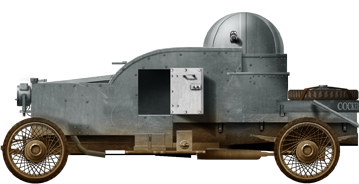
Rendition of the SAVA Armoured Car in light cyan-grey factory paint, a standard for artillery at the time.
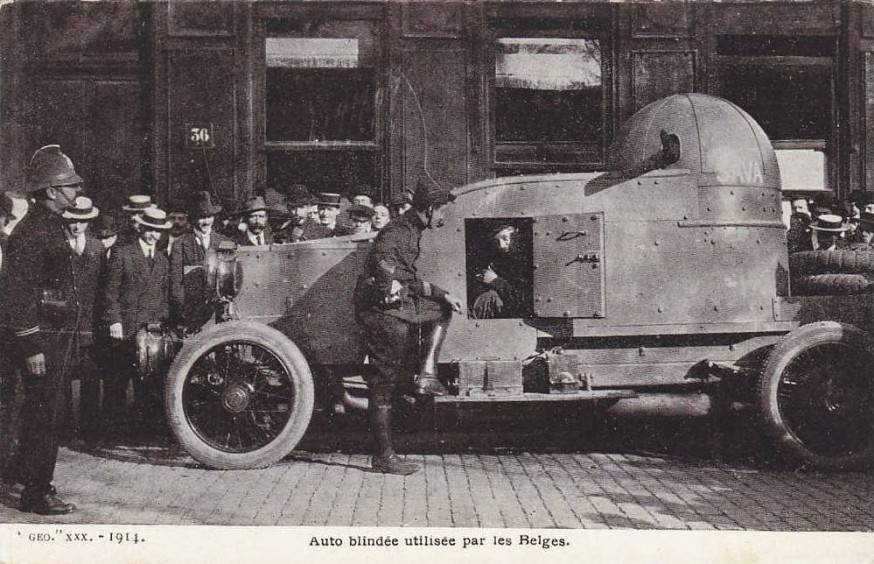

Official presentation of the Sava in Antwerp, and the same "colorized".
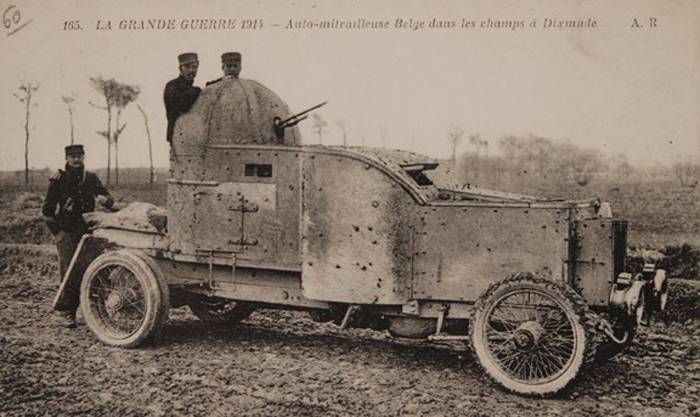
In the field of Dixmude, showing two men in the same turret.
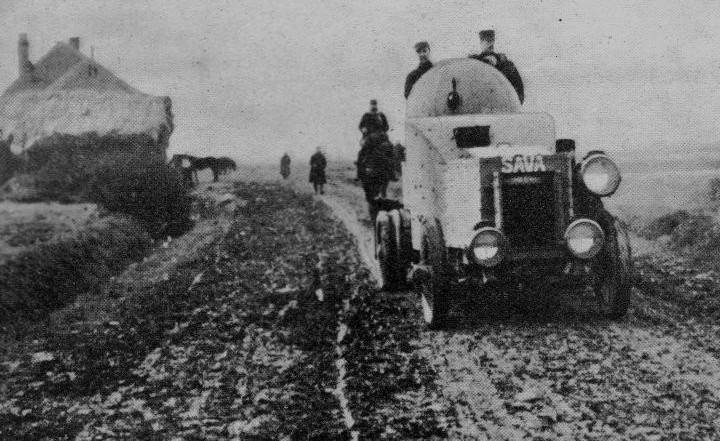
Same again, underway with cavalry
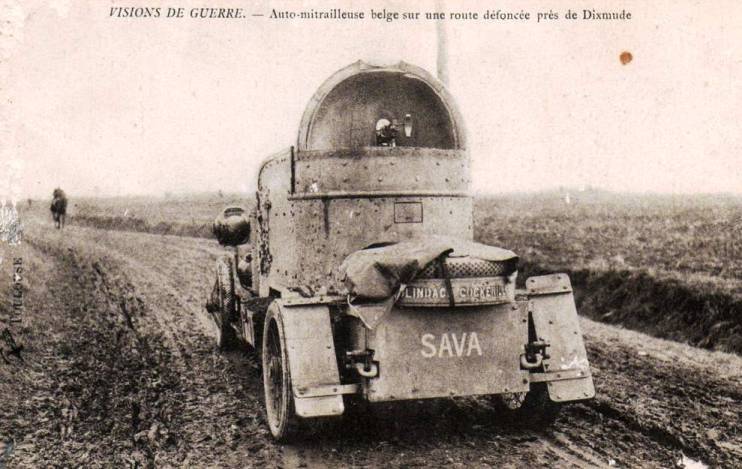
Same, Dismude, rear, showing the shield's rear. Note the repeated SAVA mention on the chassis and "blindage Cockerill" on the back of the spare tyres holder.
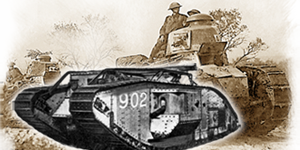
The Great War
 Austria-Hungary
Austria-Hungary Belgium
Belgium British Empire
British Empire France
France German Empire
German Empire Italy
Italy Russia
Russia USA
USAWW1 tanks posters
